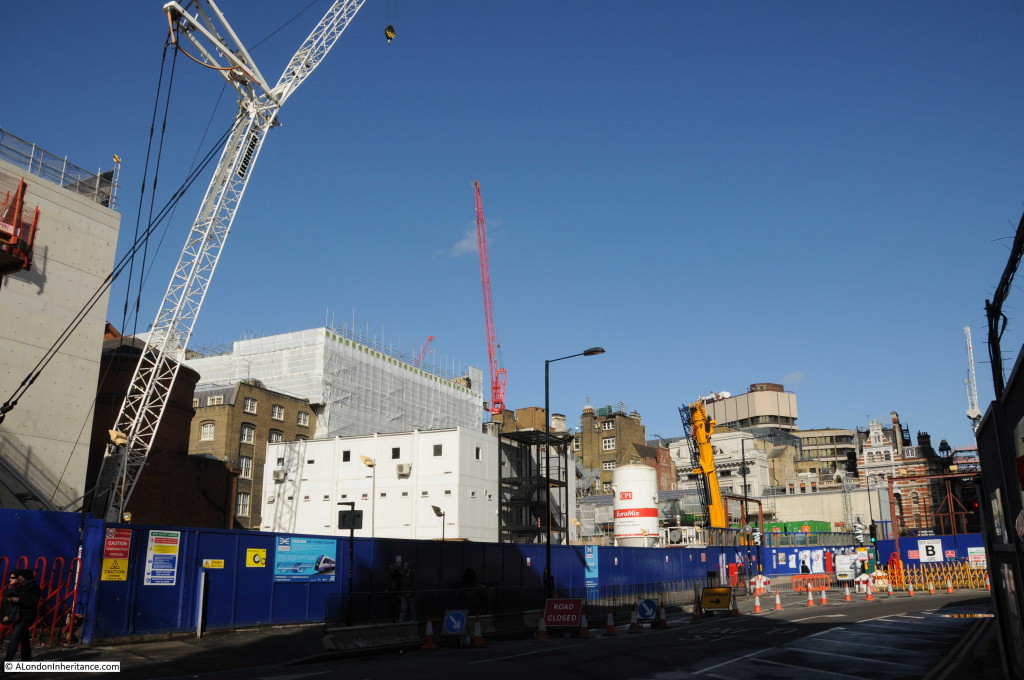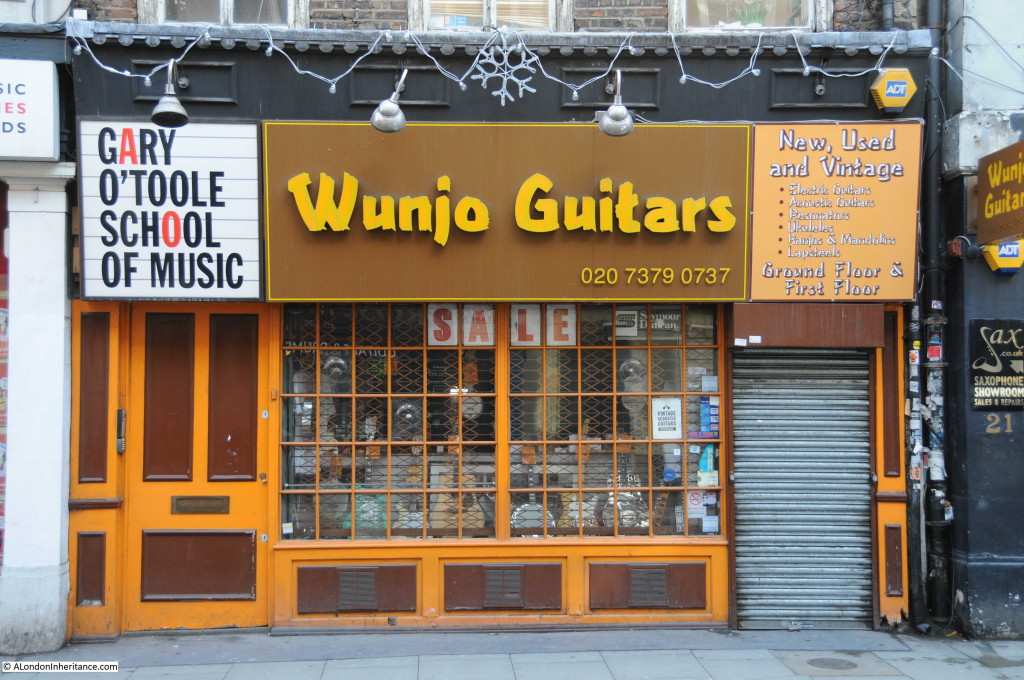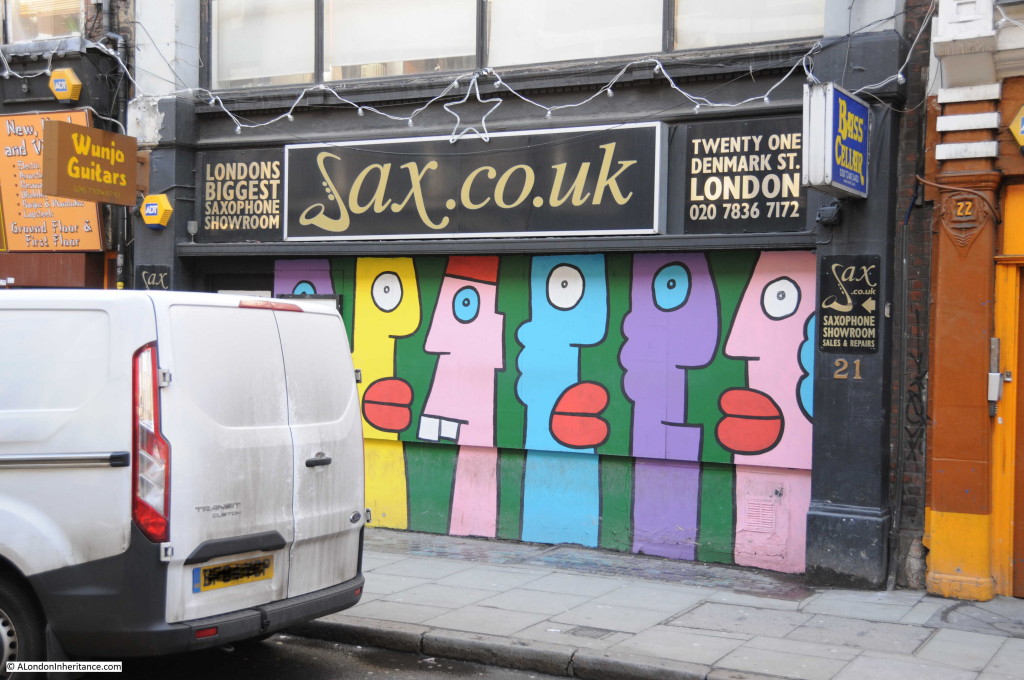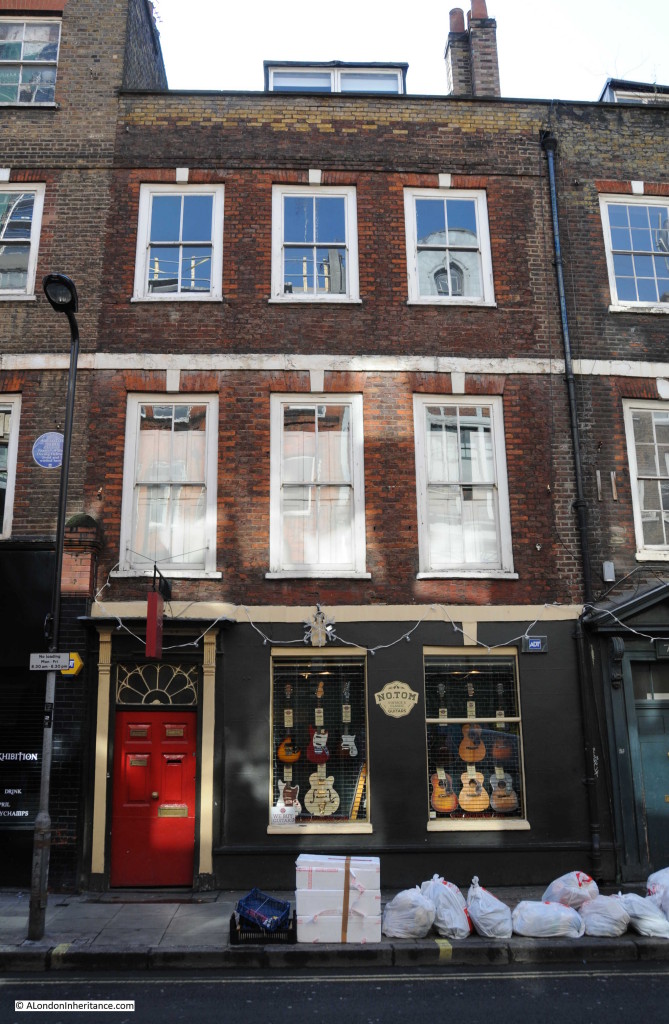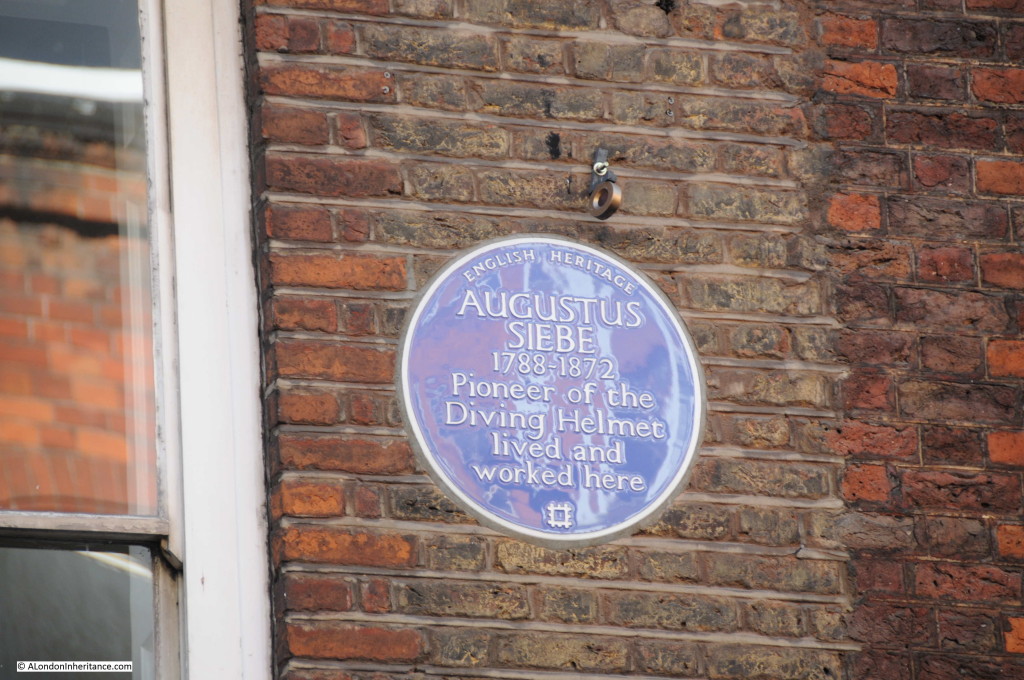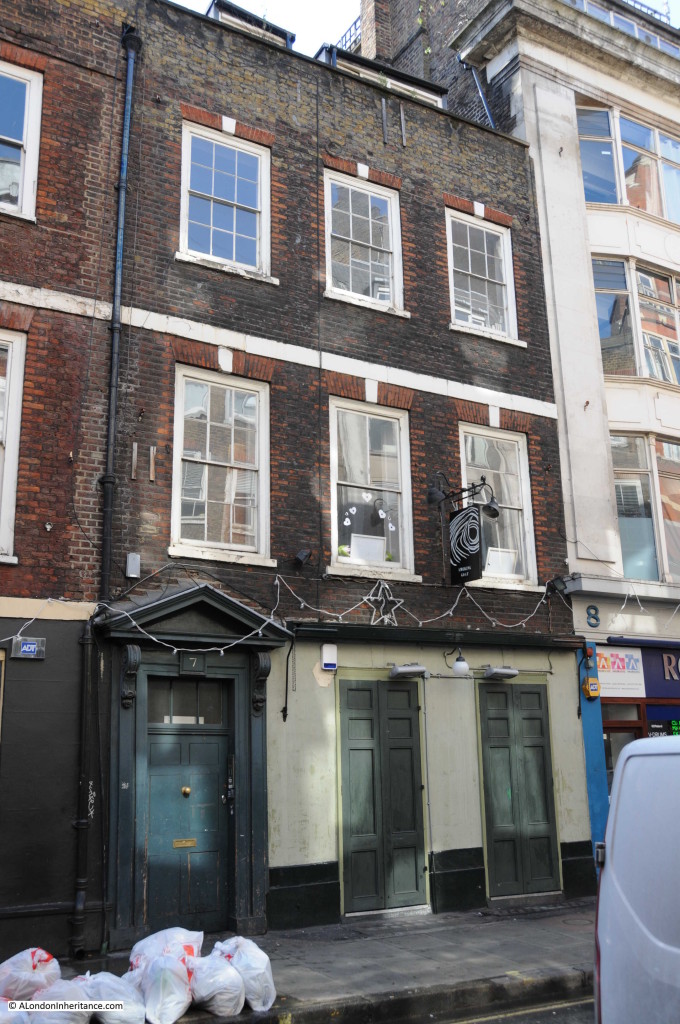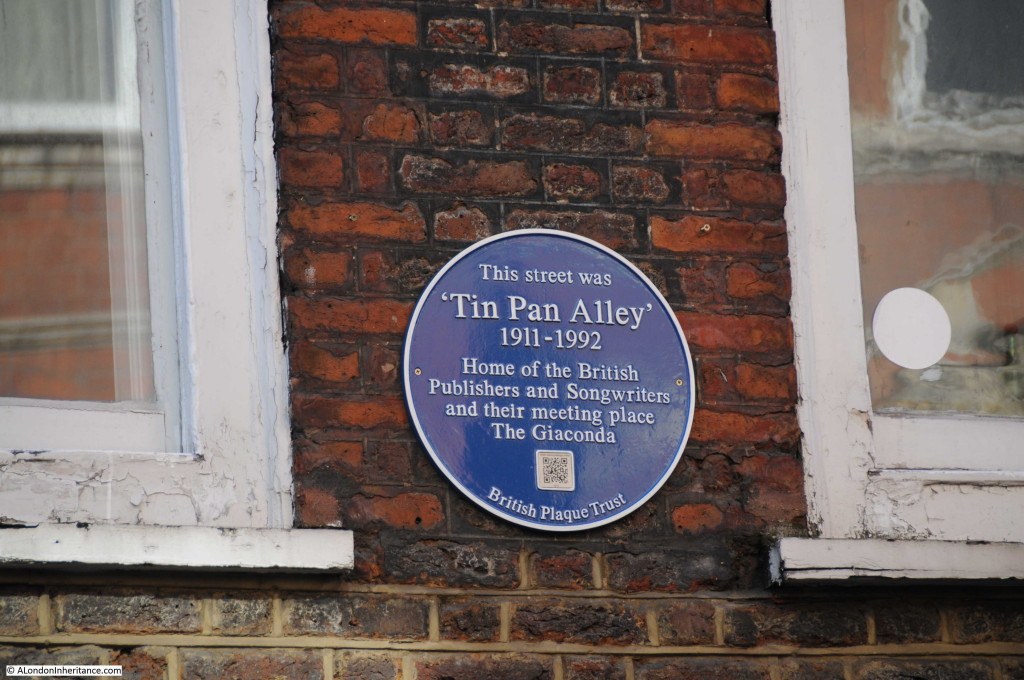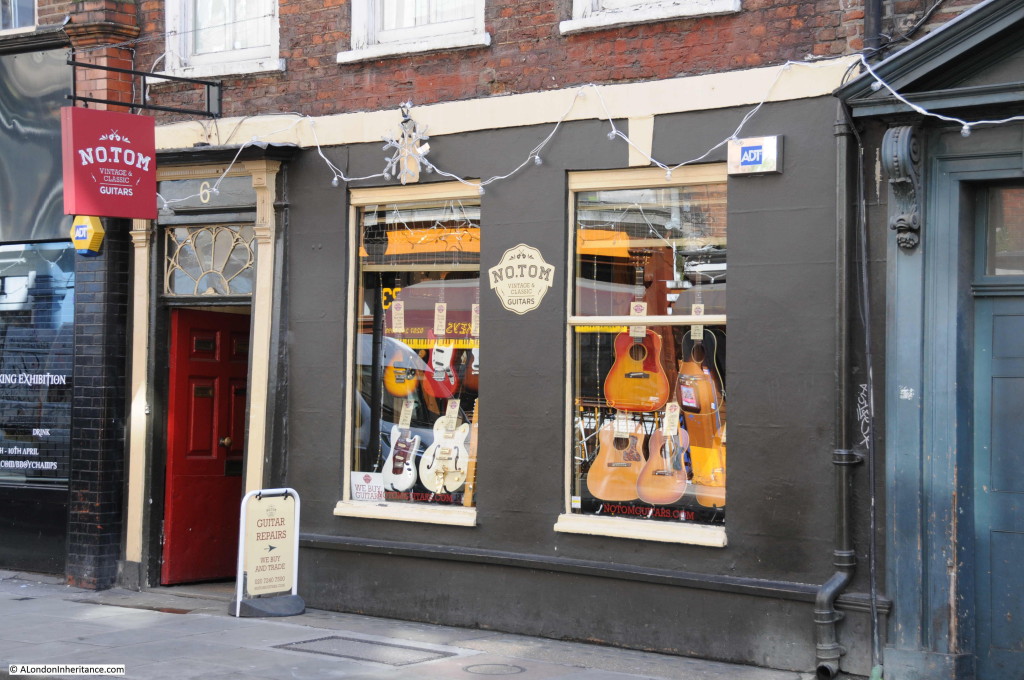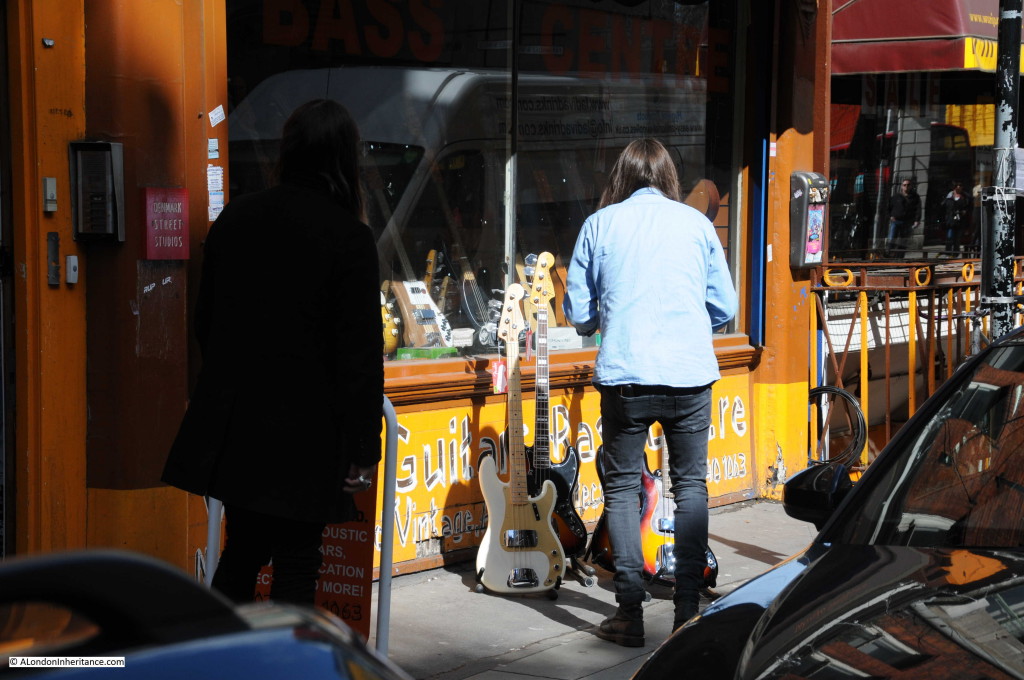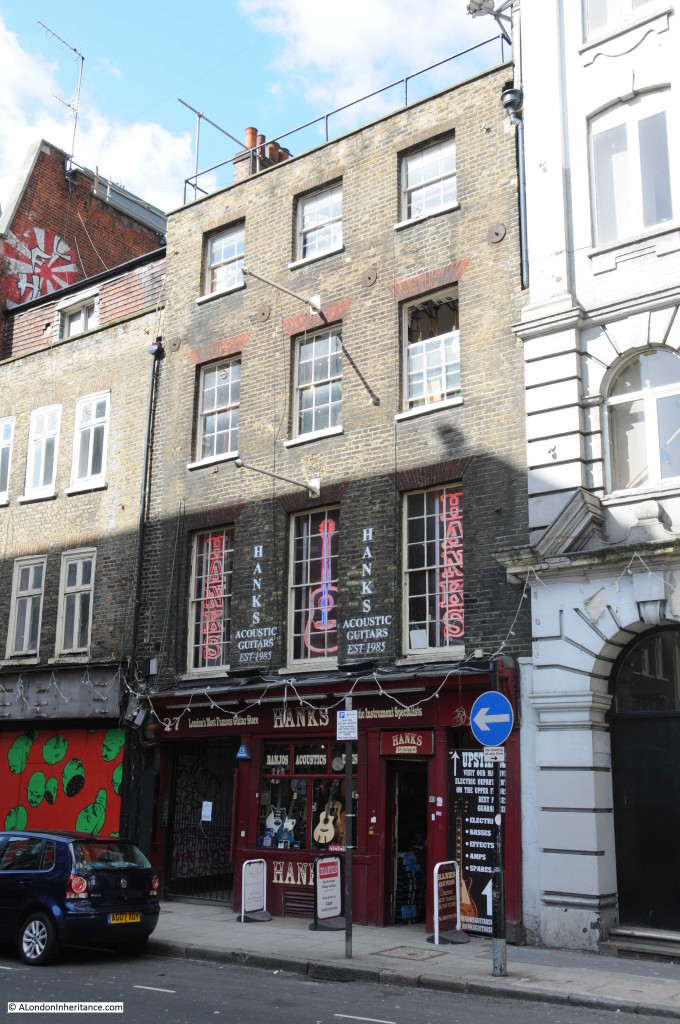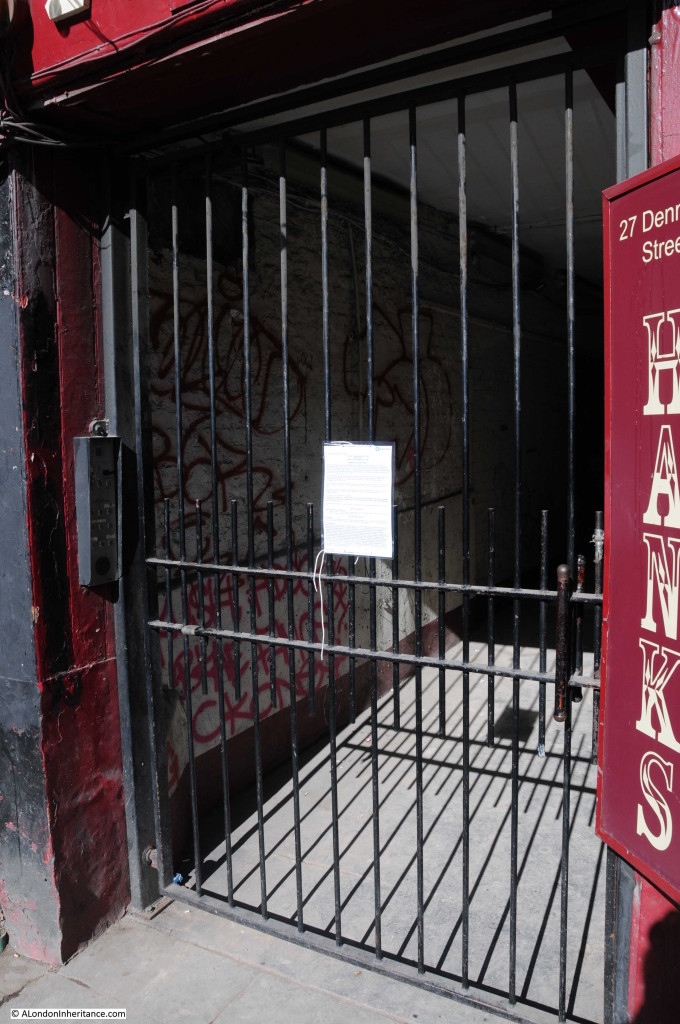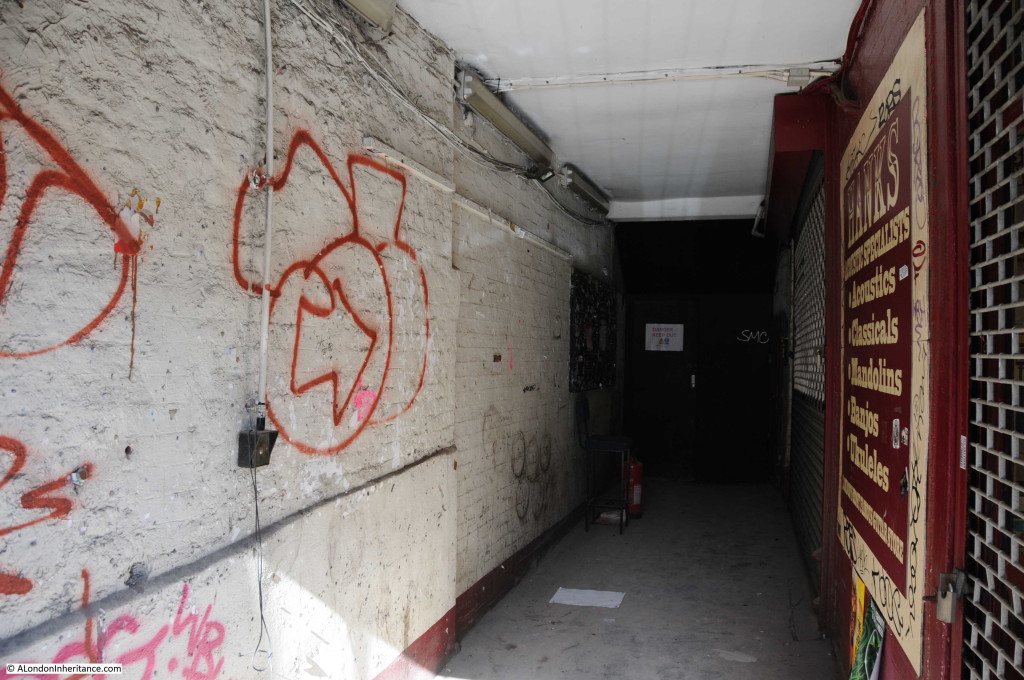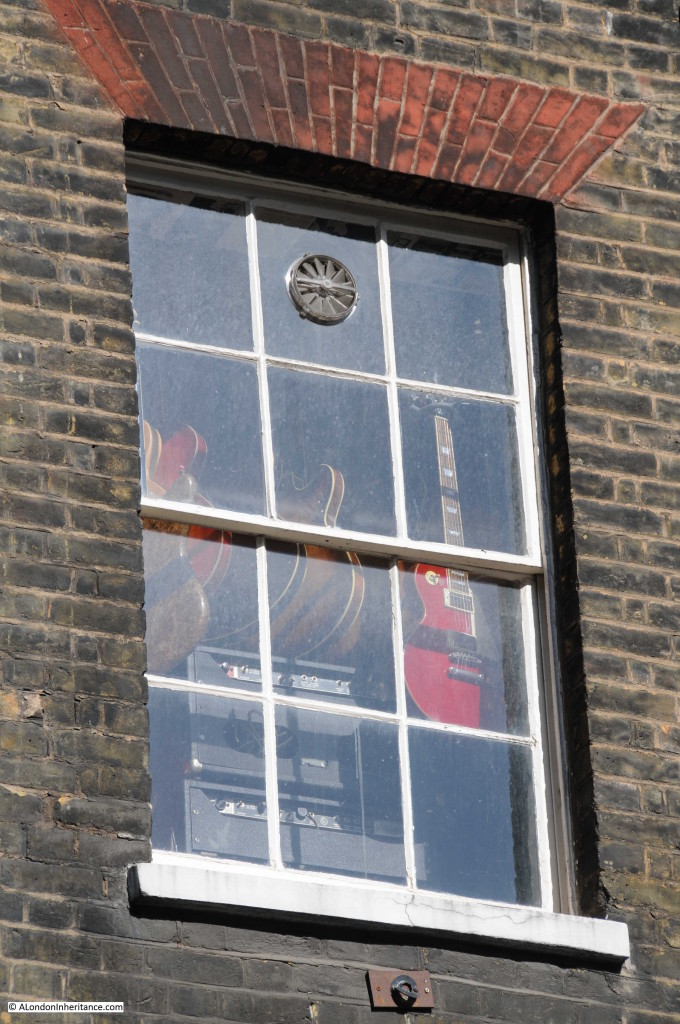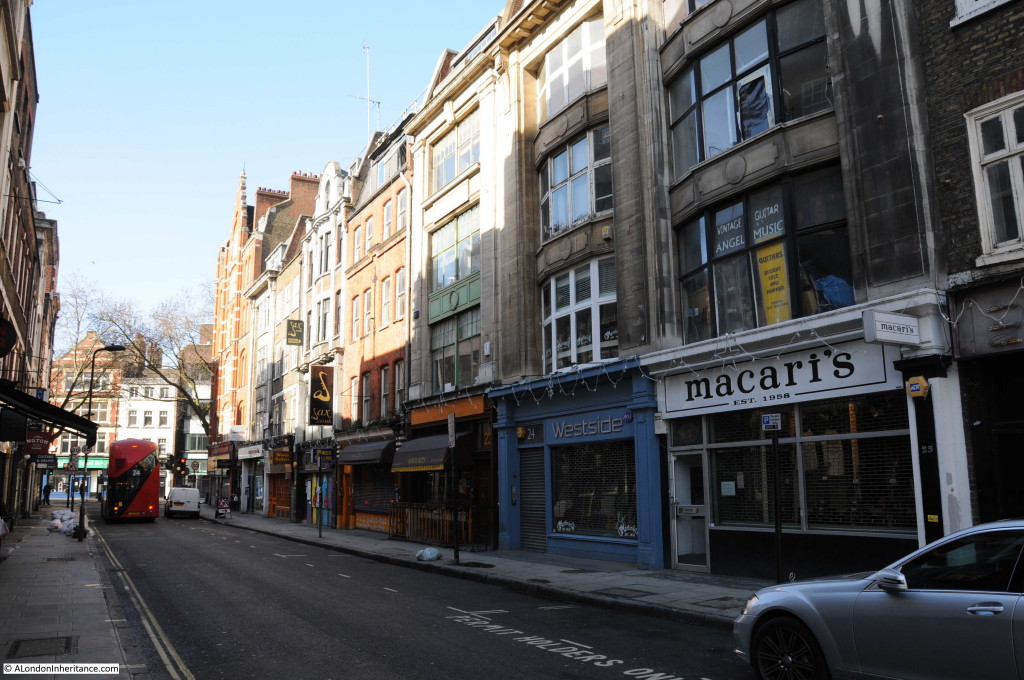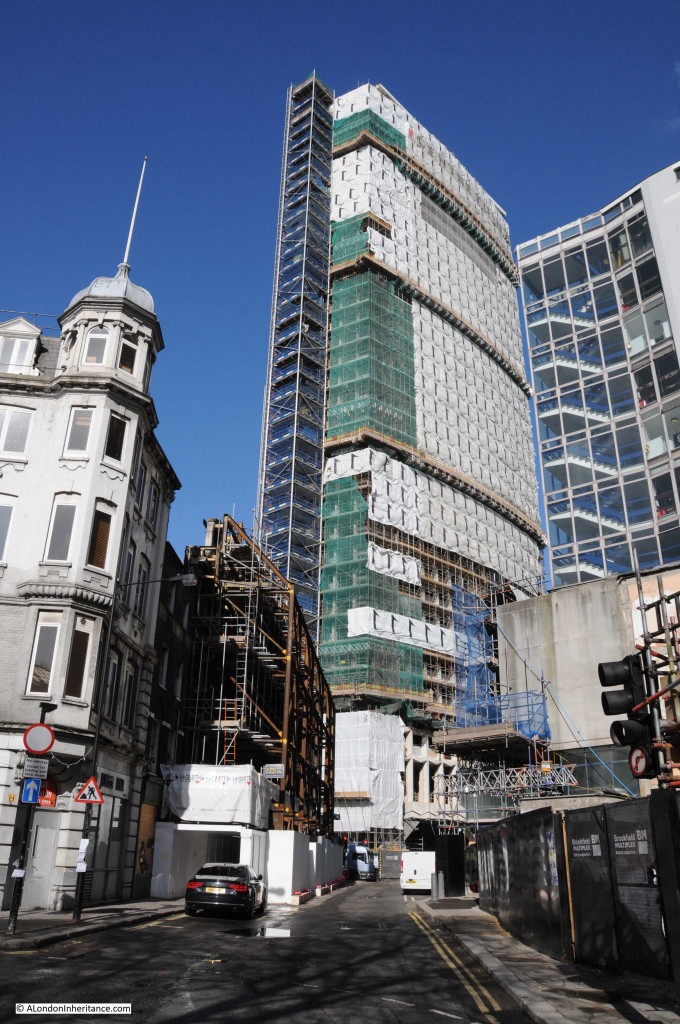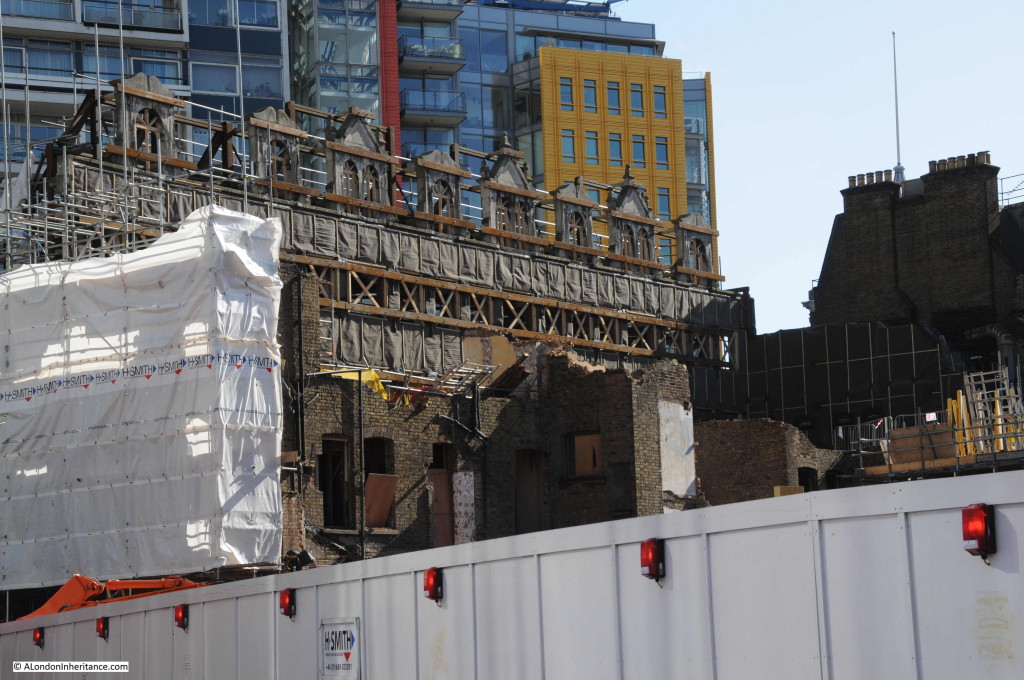London has always had areas which attracted specific types of trade, shops and industry, a number of which clustered around Tottenham Court Road underground station.
To the south, along Charing Cross Road was Foyles and a range of second hand bookshops (some of which remain, along with Foyles in their new location). To the north, along Tottenham Court Road was to be found a large number of electronics shops. It was here that I bought my first calculator whilst still at school in 1976, a Decimo Vatman, so called because as well as the normal addition, subtraction, multiplication and division keys, it also had a (revolutionary for the time), percentage key. When I last walked along Tottenham Court Road, nearly all of these electronics shops have now disappeared.
The Paolozzi mosaics at Tottenham Court Road underground station featured designs including cameras, electronics, music shops and saxophones to reflect the area around the station. It is these last two which feature in this week’s post, from a street I have been wanting to photograph for some time as the area is changing considerably. Walk a short distance south along Charing Cross Road and you will find Denmark Street, a street that has been the hub of the music industry for many decades.
I walked to Denmark Street early on a very sunny morning – not always the best for photography with the contrast between light and dark.
Looking back up towards the large building site at the top of Charing Cross Road, an indication of what is happening to the area:
On the corner of Charing Cross Road and Denmark Street:
Looking down Denmark Street from Charing Cross Road, a mix of architectural styles, with at the end of the street, a sign of things to come with the standard new build that can now be found anywhere across London.
According to George Cunningham in “London – a Comprehensive Survey”, Denmark Street was built in 1689 and is the scene for the Noon drawing from Hogarth’s series Four Times of The Day. The drawing contrasts the different populations of the area, an elegant crowd leaving a French Huguenot Church, compared with a rowdy crowd of Londoners outside a tavern.
Numbers 4, 5, 6, 7, 9 and 10 Denmark Street, although having had many alterations, are still much the original buildings from the 1689 construction of the street.
Denmark Street is now mainly guitar shops, but at the peak of the music industry here in the 1960s was also the home of music publishers, recording studios, and the music papers NME and Melody Maker.
Wunjo Guitars and the Gary O’Toole School of Music:
There have been a number of recent closures, including this Saxophone shop which has now moved to Hampstead Road.
The old signs still on the building:
Number 6 Denmark Street, one of the remaining 17th century townhouses which was recently Grade II listed. The building was the home of the Sex Pistols for a time in the 1970s and has John Lydon’s graffiti still on the walls.
Number 5 was the London home of Augustus Siebe who designed a version of the diving helmet which was detachable from the main body and included a valve in the helmet. This new design revolutionised diving for the construction, naval and salvage industries.
Number 7, the Smoking Goat restaurant:
Rose Morris, opened in Denmark Street in 1920:
Plaque recording the alternative name sometimes used for the street:
Music Room:
Westside:
Regent Sounds Studio. The original recording studios here were used by the Rolling Stones to record their first album. Others recording here included the Kinks and Black Sabbath:
Guitars are everywhere:
Taking photos of guitars in the sun:
Hanks Guitar shop:
Denmark Place alley, adjacent to Hanks, closed now and subject to a stopping-up order due to the large development at the rear of Denmark Street:
Denmark Place – an old alley, now with nowhere to go:
Yet more guitars:
Looking back up Denmark Street towards Charing Cross Road:
The opposite side of the street:
At the end of Denmark Street is St. Giles-in-the Fields. Outside the church and looking back at the corner of Denmark Street. New building to the right:
Looking down St. Giles High Street towards the Centre Point building which is now being redeveloped and will consist of “82 highly exclusive, superior luxury apartments” .
The redevelopment will also apparently transform the area into “one of the most visited retail, leisure and prime residential hubs in the country”. I fully agree that the area around Centre Point was in need of development, however I fear this area will now become the hub of ridiculously expensive luxury apartments and global retail brands – much as can be found across the rest of London with no local character or acknowledgement of the areas history.
To see the scale of construction, walk down St. Giles High Street and turn left to see this example of facadism. The whole area at the rear of Denmark Street is being rebuilt and the old facade onto St. Giles High Street looks to be the only part that will possibly remain.
Although the 1960s and 1970s were the peak for the music industry in Denmark Street, it still retains a very unique character, which I fear will be lost in the years ahead as the area sucumbs to the corporate development which is sanitising so much of London. Specialist shops will go online or disperse across London (as with the Sax shop) and the impact of clustering a specific trade will be lost.
For an in depth look at Denmark Street, I recommend the excellent Street of Sound photo blog.

